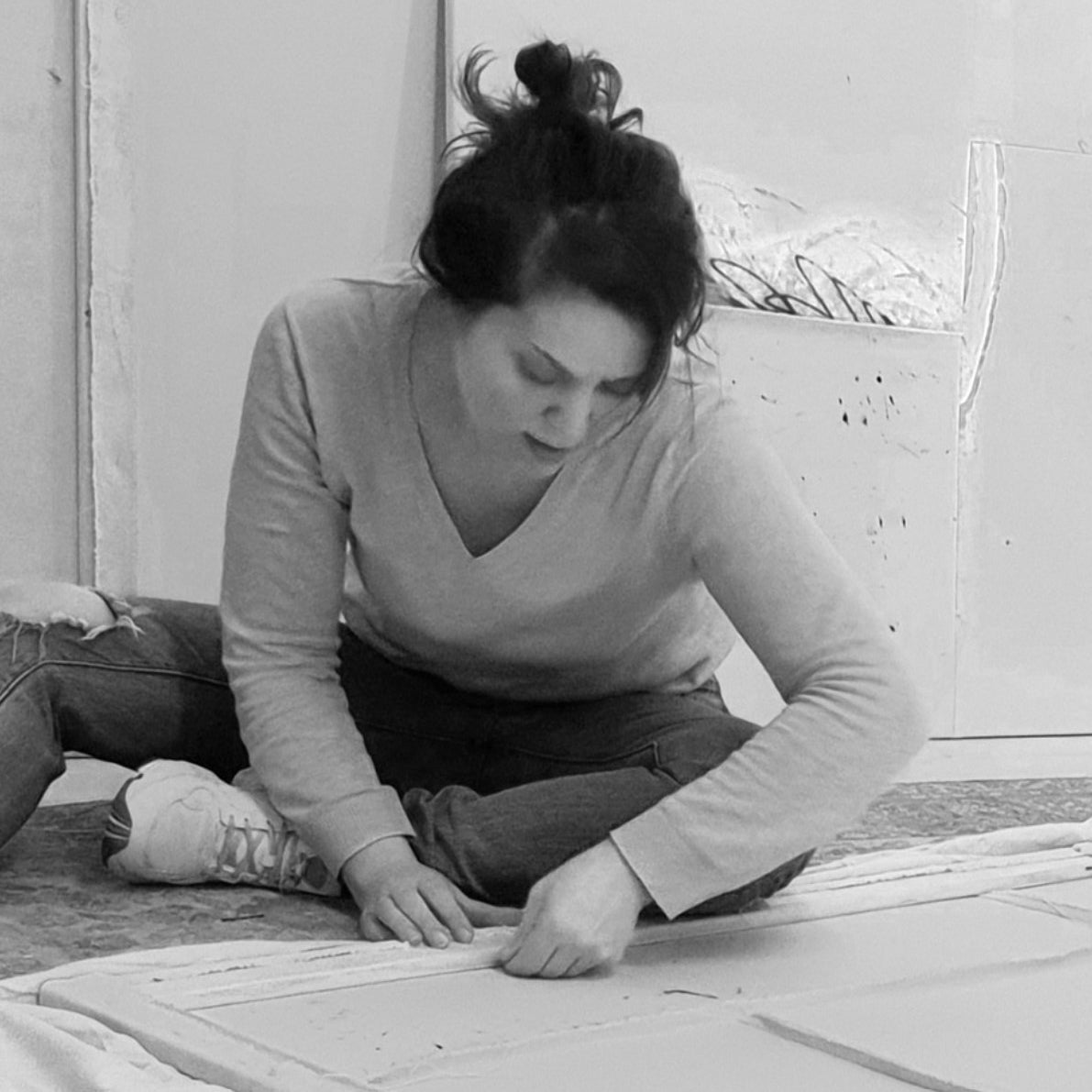Maria Isabel Gonzalez (aka Marisabel) was born in 1973 in Caracas, Venezuela. She works from her studio located in the industrial area of the Northern Beaches of Sydney, Australia. Marisabel, despite completing multiple art-related courses, is mainly a self-taught artist. She has a background in medical imaging which she incorporates into her art practice.
 How did you get into art?
How did you get into art?
My art journey began during my teenage years at the pottery wheel but slowly transitioned into traditional oil painting as kilns were not readily available in the area I lived. Through traditional painting I became familiar with all the art conventions and rules, but I discover very early that none of these were applicable to my best forms of artistic expression. This allowed for a very organic migration into abstraction.
I was able to lock in as many hours as I could of art- related courses while I was completing my medical career, but it was only when I migrated to Australia that my artistic journey took off.
Migration had a transformative effect as I had to reinvent myself as a person and as a professional.
How would you describe your style? What makes your work special?
I explore visual storytelling through abstract painting, emphasizing the emotional dimensions of human nature, the psychological impact of color, and the potential of color as a powerful mean of communication.
My works are marked by the use of vivid colors, expressive mark-making, gestural interventions, and the incorporation of text and collaged elements, over canvas, aluminum, and wood. At the root of my artistic practice, you encounter visual analogies with my background in medical imaging, as the mark-making is influenced by the echo patterns of the ultrasound examinations. There is an ongoing correlation between the process of painting and medical imaging, as layering the composition or image by the manner of a question-and-answer approach, is common to both fields.
 How do you go about developing your work?
How do you go about developing your work?
I have been studying the use of color and its psychological effects for years and have applied this knowledge into the canvas in a similar way on how the light (or bright) echo reflectors will form an ultrasound image. For the last two years I became interested in the concept of Palimpsest and have been adding it to my practice. Beyond treating the canvas as a colorful manuscript in which I can layer and recycle thoughts, emotions, and narratives, this concept has been put in application through the reuse and renewal of objects. As a result, some paintings incorporate collage elements such as stitches and bandages composed of discarded canvases and fabric, serving as poignant memento mori, symbolizing my previous life as a doctor, but also reflecting the passage of time in general, remembrance and oblivion, and the transformative nature my own journey. Palimpsest represents the process of reinvention that I have been subject through the years as an immigrant, professionally and personally, hence, my subject constantly moves from deeply intricated medical motives to memories of my own culture.

Who or what influences you?
Everything I am—my persona—I have been able to observe and develop with art. But what makes one's persona? My background in medicine, my career as an artist, my experiences of motherhood, my cultural Latin-American heritage, and my life as an immigrant; all blend into my practice.
What are you planning to do next?
I have just completed a major solo exhibition in Sydney during early September and will continue to explore the concept of palimpsest in the developing of my practice. The near future offers a presentation in London and an artist in residency in Italy for 2024.

Image credits to: Kayapa Creative Studio and Josefina Vargas




